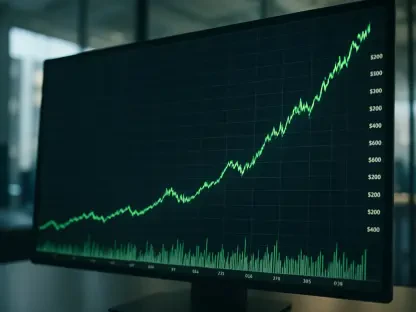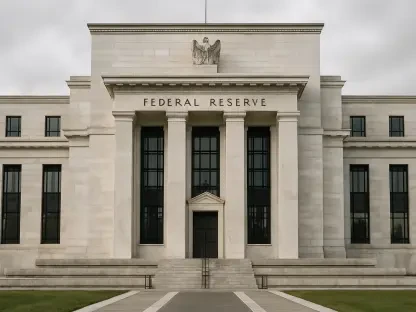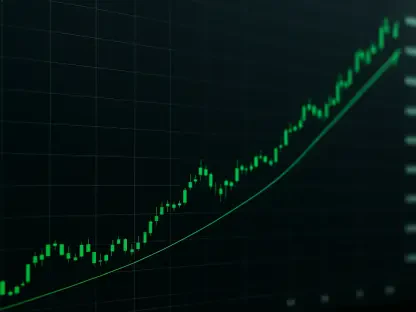Priya Jaiswal, an esteemed expert in Banking, Business, and Finance, brings a wealth of experience in market analysis and international business trends to the table. With her extensive knowledge, Jaiswal provides unique insights into the current economic challenges facing the U.S., particularly the consequences of declining consumer sentiment and its potential to precipitate a recession. Through this interview, we explore the complex interplay between consumer expectations and economic realities, as Jaiswal unpacks both quantitative indicators and qualitative insights into economic trends.
Can you explain how declining consumer sentiment can lead to a self-inflicted recession?
A self-inflicted recession occurs when consumer confidence plummets, leading to a decrease in spending. Consumers, concerned about the economy’s future, may pull back on their expenditures, which directly impacts businesses. As corporate revenues fall, companies may reduce their workforce or halt expansions, exacerbating the downturn. Essentially, if individuals collectively scale back spending due to fear of recession, their actions can inadvertently usher in the very recession they feared.
What specific indicators are you monitoring that suggest consumer sentiment is deteriorating?
I’m particularly focused on consumer expectations and inflation expectations. The Conference Board’s Expectations Index is a crucial measure, as it reflects how consumers feel about the economy and their own financial prospects. Additionally, the University of Michigan surveys provide insights into inflation expectations and unemployment fears, which inform how consumers might alter their spending behaviors.
How does the Conference Board’s Expectations Index reflect current consumer attitudes about the economy?
The Expectations Index, which recently fell to 54.4, serves as a barometer for consumer outlook on economic conditions. This index gauges sentiments towards job prospects and business conditions over the next six months. Such a low reading indicates significant pessimism, often associated with economic stagnation or decline. Historical patterns suggest that when this index falls below 80, it frequently aligns with recessions, painting a troubling picture of current consumer attitudes.
Why is a level of 54.4 in the Conference Board’s Expectations Index particularly concerning?
A level of 54.4 represents extreme pessimism, the lowest since 2011. Such a figure indicates the public’s substantial unease regarding future economic conditions, labor market stability, and business climate. It’s a worrying signal because these attitudes can lead to reduced consumer spending and investment, directly affecting GDP growth and pushing the economy toward recessionary territory.
What implications does the 5% inflation expectation have for the economy, compared to previous months?
A 5% inflation expectation suggests significant concerns about rising costs, impacting consumers’ purchasing power and leading them to alter spending habits. This rate was much lower at 2.6% last November, and the sharp increase can pressure the economy by prompting consumers to delay large purchases, cut discretionary spending, and demand higher wages, potentially fueling further inflation.
What trends have you observed in consumer expectations for unemployment over the next year?
There is a troubling trend of increasing consumer expectations for unemployment. Recently, 67% of consumers anticipated a rise in unemployment, marking a sustained increase over five months. This apprehension can lead to conservative financial planning, reduced spending, and heightened savings, potentially curtailing consumer-driven economic growth.
In your analysis, how does the change in consumer sentiment impact GDP growth specifically?
Consumer sentiment closely influences GDP growth, as consumption accounts for a substantial portion of economic activity. A decline in sentiment can lead to reduced consumer spending, which directly impacts GDP. Recently, there’s evidence suggesting consumer sentiment could lead real GDP growth to fall from around 3% to zero, underscoring its critical role in economic trajectories.
Based on your estimates, how might consumer behavior affect real GDP growth in the near term?
If current consumer sentiment trends persist, we may see a significant contraction in consumer spending. Reduced spending impacts business revenue, leading to cost-cutting measures such as layoffs, which further stifle economic activity. My estimates suggest this could cause GDP growth to stagnate or even slip into contraction over upcoming quarters, particularly if consumers increasingly prioritize saving over spending.
How does a technical recession differ from other types of economic downturns?
A technical recession is defined by two consecutive quarters of negative GDP growth, regardless of other economic conditions. Unlike more severe recessions marked by significant unemployment increases or widespread business failures, a technical recession may still see stable employment rates and strong corporate profitability, provided broader economic fundamentals remain intact.
Despite concerning sentiment indicators, why do some forecasters still believe the economy is on solid footing?
Forecasters maintain confidence based on strong fundamental data, such as healthy corporate earnings and low unemployment rates. These elements provide a counterbalance to negative sentiment indicators, suggesting that while consumer confidence is shaken, underlying economic strengths may prevent a full-blown recession, ensuring continued, albeit moderate, economic growth.
What role does the unemployment rate play in assessing the overall economic health amidst recession fears?
The unemployment rate is crucial for assessing economic health, as it directly impacts consumer spending and confidence. A low rate suggests robust job security, fostering consumer confidence and spending power. If unemployment remains low, it may counterbalance declines in sentiment, supporting economic stability even in times of uncertainty.
How should policymakers respond to prevent a self-inflicted recession if consumer sentiment continues to decline?
Policymakers must prioritize communication to restore confidence by emphasizing economic strengths and implementing supportive measures. Fiscal policies that boost disposable income, like tax cuts or stimulus packages, can encourage spending. Additionally, stabilizing inflation and unemployment through strategic monetary policies can reassure consumers, helping avert the confidence-induced economic downturn.
What is your forecast for the economy given current consumer sentiment trends?
If consumer sentiment does not improve, the economy risks tipping into recession within the next year. However, targeted interventions can mitigate these risks. Effective communication from policymakers about economic strengths and clear actions to support consumers and businesses could prevent this downturn and maintain moderate growth.









